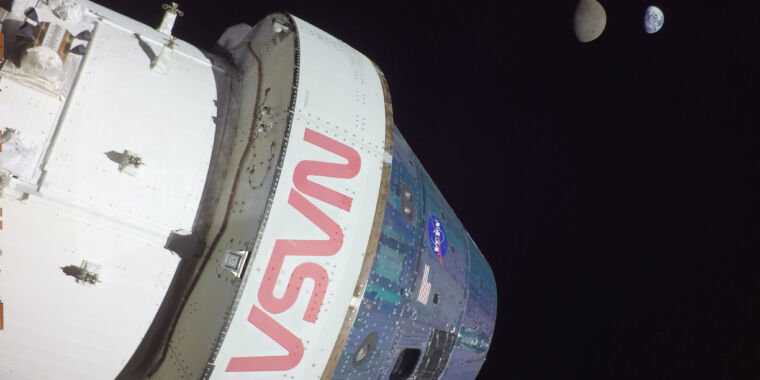NASA’s Assessment of Artemis II Mission Readiness
NASA’s acting inspector general, George A. Scott, recently released a report that provided a comprehensive assessment of NASA’s preparedness to launch the Artemis II mission scheduled for the upcoming year. This mission holds significant importance for the space agency as it marks the first time humans will venture into deep space in over fifty years, albeit without landing on the Moon.
The primary concern highlighted in the report pertains to the performance of the heat shield responsible for safeguarding the Orion spacecraft during its intense reentry at speeds exceeding 25,000 mph upon return from the Moon. Despite initial assurances from NASA following the completion of the uncrewed Artemis I flight in late 2022, the unexpected damage and charring observed during that mission have raised substantial apprehensions.
Amit Kshatriya, overseeing the development of the Artemis missions within NASA’s exploration division, reiterated the agency’s ongoing efforts to identify the root cause of the heat shield issues. The inspector general’s report, serving as an independent entity tasked with investigating potential discrepancies within NASA programs, offered further insights into the concerns surrounding the heat shield.
The unresolved challenges associated with the heat shield pose a notable risk to NASA’s planned launch of Artemis II in September 2025. Two images unveiled in the report showcased undisclosed details about the deep divots observed in the Orion heat shield post-Artemis I.
Assessment of NASA’s Response
Of particular interest was NASA’s response detailed towards the conclusion of the report. Catherine Koerner, the associate administrator for Exploration Systems Development Mission Directorate, acknowledged each of the six recommendations outlined by the inspector general. However, a noteworthy hint of discontent was evident in Koerner’s statement.
“NASA remains committed to enhancing our processes to ensure safety and address risks. However, the redundancy within the recommendations does not effectively evaluate the economic and efficient governance of NASA’s programs,” Koerner remarked, emphasizing a critique on the perceived redundancy in the suggestions.
While Koerner’s response seemingly reflects a sense of displeasure, it hints at the mounting pressure faced by NASA officials regarding the Artemis mission. With the impending flyby mission around the Moon considered relatively manageable, the subsequent lunar landing endeavor involving Orion docking with SpaceX’s Starship in lunar orbit poses a vastly ambitious challenge. Political scrutiny, coupled with congressional oversight amid potential delays, amplifies the stakes for NASA.
During a recent hearing of the House Science, Space, & Technology Committee pertaining to NASA’s fiscal year 2025 budget, Chairman Frank Lucas referenced internal deliberations within NASA regarding possible modifications to the Artemis III mission. These discussions, encompassing the prospect of adapting the mission profile to incorporate Orion and Starship docking in low-Earth orbit, underscore the evolving landscape surrounding NASA’s lunar exploration missions.
Image/Photo credit: source url





